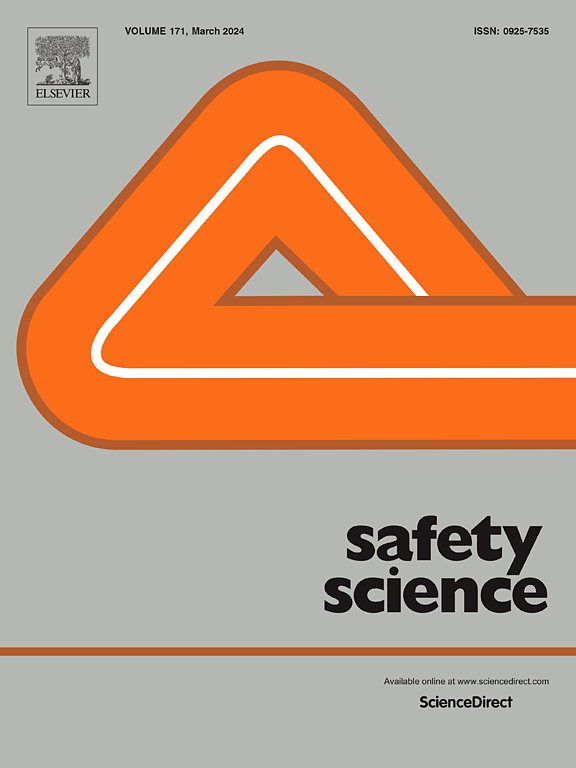准备,开始,滑行调查对骑电动滑板车危险情况的内隐态度:去/不去联想任务研究
IF 4.7
1区 工程技术
Q1 ENGINEERING, INDUSTRIAL
引用次数: 0
摘要
电动摩托车是一种流行的城际微型交通方式,在特拉维夫和全球其他城市的使用率稳步上升。尽管电动摩托车的使用量不断增加,但人们对这些易受伤害的道路使用者对相关风险的态度还缺乏了解。本研究旨在探讨以色列不同城市地点的电动摩托车使用者对骑行电动摩托车相关风险的隐性和显性态度。初步研究包括利用真实世界的场景开发一个定制的 "去/不去关联任务"(GNAT)工具。46 名参与者简要观察了不同电动摩托车骑行情况的图片,并用李克特量表对其风险程度进行了评分。总体而言,在指定的小径上骑行比在人行道或公路上骑行更安全,电话交谈时除外。只有在使用耳机或导航时,人们才会对道路和人行道的风险程度有不同的看法。忽视佩戴头盔被认为是有风险的。在主要研究中,64 名参与者完成了评估对危险骑行的内隐和外显态度的任务。自称比较谨慎的骑行者在消极引物下比在积极引物下对危险情况的反应更准确,比不那么谨慎的骑行者表现出更有利的规范。对于积极引物和风险区块,明确态度对正确识别风险情况的概率有积极影响,这表明较不谨慎的骑行者只有在积极引物下才能表现出更有利的规范。了解电动滑板车骑行者的态度可能有助于制定减少冒险倾向的干预措施。本文还讨论了许可证发放和政策建议的意义。本文章由计算机程序翻译,如有差异,请以英文原文为准。
Ready, set, scoot! Investigating implicit attitudes toward risky e-scooter riding situations: A go/no-go association task study
E-scooters are a popular intercity mode of micro-mobility, with usage steadily rising in Tel-Aviv and other cities globally. Despite the increasing e-scooter use, there exists a gap in understanding the attitudes of these vulnerable road-users toward the associated risks. This study aimed to explore e-scooters’ implicit and explicit attitudes toward the risks associated with e-scooter riding at different city locations in Israel.
Two experiments were conducted toward this goal. The preliminary study involved developing a customized Go/No-go Association Task (GNAT) tool, utilizing real-world scenarios. Forty-six participants briefly observed pictures of different e-scooter riding situations and rated their riskiness level on a Likert scale. Overall, riding on designated trails was perceived as safer than sidewalks or roads, except during phone conversations. Roads and sidewalks were perceived differently regarding riskiness level only during phone use with headphones or navigation. Neglecting to wear a helmet was perceived as risky. The GNAT tool proved valuable in assessing implicit attitudes.
In the main study, sixty-four participants completed tasks assessing implicit and explicit attitudes toward risky riding. Self-described more cautious riders demonstrated more accurate responses to risky situations under negative than under positive priming, showing more favorable norms than less cautious riders. For positive priming and risky blocks, there was a positive effect of explicit attitudes on the probability of correctly identifying risky situations, suggesting that less cautious riders demonstrate more favorable norms only under positive priming. Understanding e-scooter riders’ attitudes may contribute to producing interventions that reduce risk-taking tendencies. Implications for licensing and policy recommendations are discussed.
求助全文
通过发布文献求助,成功后即可免费获取论文全文。
去求助
来源期刊

Safety Science
管理科学-工程:工业
CiteScore
13.00
自引率
9.80%
发文量
335
审稿时长
53 days
期刊介绍:
Safety Science is multidisciplinary. Its contributors and its audience range from social scientists to engineers. The journal covers the physics and engineering of safety; its social, policy and organizational aspects; the assessment, management and communication of risks; the effectiveness of control and management techniques for safety; standardization, legislation, inspection, insurance, costing aspects, human behavior and safety and the like. Papers addressing the interfaces between technology, people and organizations are especially welcome.
 求助内容:
求助内容: 应助结果提醒方式:
应助结果提醒方式:


